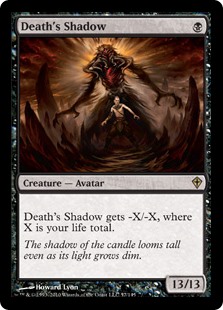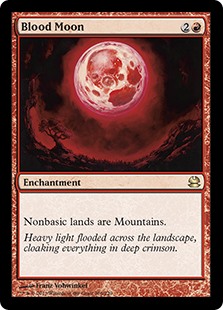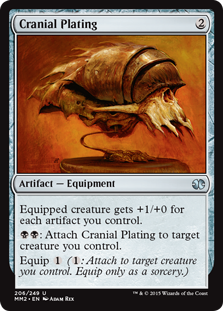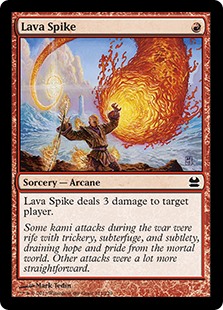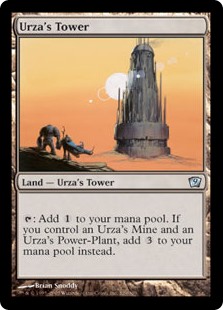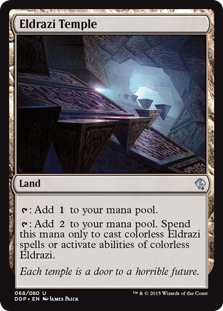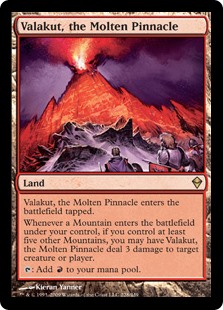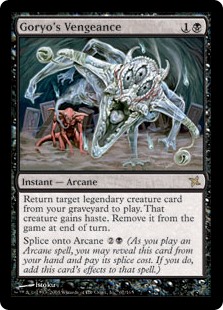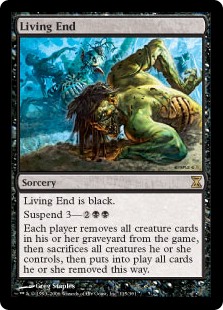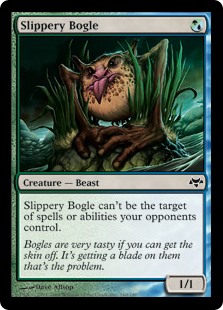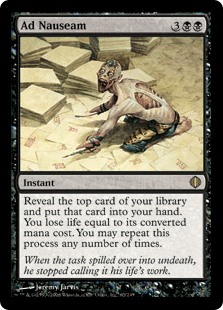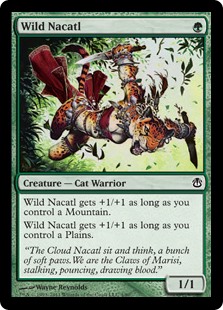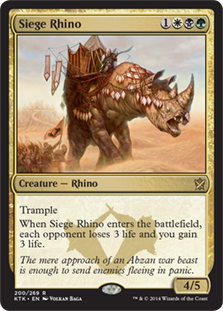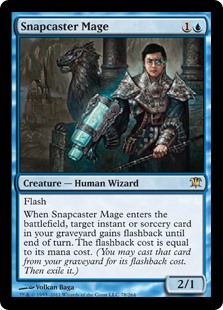Welcome back to Magic Gatherings!
UPDATE (2/5, 11:00 P.M.): Day One of Pro Tour Oath of the Gatewatch is in the books! If you haven’t already had a chance, check out the official coverage page, which has loads of goodies: videos of feature matches, deck techs, player interviews, and more.
Now that we’ve had a chance to see what the pros are playing, I’ve added the breakout decks of the tournament to the list of synopses below. Scroll down to see the new archetypes and get a sense for how they play.
Last week we had a quick excursus back to Commander and covered a couple decks based on Battle for Zendikar legends. This week it’s back to current events in Magic: this weekend is Pro Tour Oath of the Gatewatch. When this article goes up, in fact, the Pro Tour should already be streaming live from Atlanta—whose skyline can be seen in the tournament’s promo playmat as the ironic backdrop for Nissa, green planeswalker and guardian of nature extraordinaire.

Pro Tour Oath of the Gatewatch will be a cross-format tournament featuring more than 400 of the game’s best, played out over two days. The format, in brief: on Friday morning, everyone drafts Oath-Oath-Battle. The pros play three rounds with their Draft decks, then switch up to Modern for five more rounds. At the end of Friday’s eight rounds (three Draft, five Modern), everyone with a 3-5 record or worse gets cut.
Saturday is the same format: a Booster Draft and three rounds of Limited, followed by five more rounds of Modern. At the end of Saturday, the Top Eight players (usually 12-4 records or better) are announced. Sunday is the playoff championship: single-elimination Modern, each match best three-out-of-five.
For more information on the Pro Tour and its logistics, check out this intro by Rich Hagon here, or this reddit thread here.
Today’s article is a guide to the Pro Tour aimed at more casual viewers. I’ll talk a bit about Modern and what it is, explain the gameplans of the format’s major decks, cover recent shakeups to the format, and end by adding a few more thoughts on Oath of the Gatewatch draft, which will be featured at the Pro Tour. If you’re just looking for FNM tips, feel free to scroll ahead to the bottom.
For everyone else: Modern. Let’s get to it!
Modern Sensibilities
I’ve only briefly touched on Modern in this column, when I gave some thoughts on the Modern Masters 2015 Edition reprint set. In that article, I explained a bit about Modern, but it’s handy to recap here: Modern it a non-rotating format that uses cards from roughly 2003 onwards. (In that article, I also talked a bit about why the format exists and why it’s good for Magic, so check there if you’re looking for the raison d’être.)
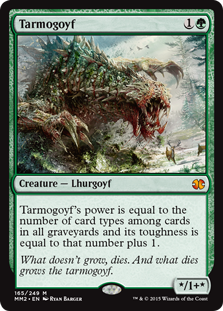
Tarmogoyf, which easily be a 5/6 for two mana, is a good indicator of Modern’s high-powered cards.
The most important thing to know about Modern is that its cards are very, very powerful. It makes sense: with more than thirteen years of cards (almost 10,000 in total!), deckbuilders can choose the very best tool for what they want to accomplish. Frequently, high power goes hand in hand with low cost, and consequently, spells in Modern tend to be very cheap.
Powerful, cheap cards mean that players who are trying can do very unfair things very quickly. Consequently, Modern has a list of banned cards that aren’t allowed in play. Banned lists attempt to shape a format according to what makes for the best gameplay and most fun. Ideally, players get the satisfaction of doing really powerful things (which is a blast) but don’t feel that games come down to who draws the best opening hand—they should have an opportunity to interact with their opponents and disrupt them in some fashion. In Modern, that’s historically meant that decks shouldn’t be able to reliably win before turn four. It’s also desirable if a variety of decks are viable choices for players who want to do well. As we’ll see, Modern is certainly a format with tons of good decks.
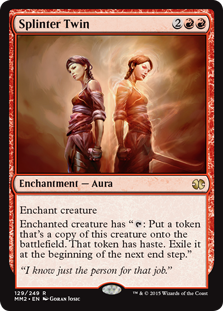
The format is also in flux right now, as Wizards just banned [mtg_card]Splinter Twin[/mtg_card], the key card from one of the format’s most prominent decks. WotC’s hope is that the ban will open up Modern a bit—and, in particular, add more variety to blue-red decks, almost all of which played the Splinter Twin combo (Twin plus any creature that untaps other creatures, like [mtg_card]Pestermite[/mtg_card], makes infinite creatures with haste). It’s been a controversial move; some pros swear that this will reduce Modern to uninteractive decks racing past each other. We’ll see shortly if the sky is falling yet.
As a format, Modern is still evolving, so each Pro Tour—where it gets stress-tested by the best in the game, who are competing for tens of thousands of dollars—is a pretty big event. If you’re interested in the history of prior Modern Pro Tours, check out this nifty article by Saffron Olive; it’s a great way to see how the format has evolved.
Modern Audiences
Part of the nature of a format like Modern is that many of its top decks try to exploit unusual interactions as parts of their gameplans. The things that happen are so powerful it can be tough for an inexperienced viewer to keep up.
Given that, I thought it would be helpful to put together a casual player’s guide to Modern—a set of thumbnail guides to the strategies of the major decks in the format. There are enough viable decks in Modern that I can’t cover each one in fine detail, but if you’re looking for more, check out the Modern metagame page on MTGGoldfish.com. I’ve linked one of their representative decklists for each archetype.
Update (2/5): And here are the new decks! I’ve pushed these to the top of the list so they’re easy to find.
First, you can find a broad perspective on the metagame from Wizards’s Corbin Hosler here, and a post Day One breakdown from the inimitable Saffron Olive here. Saffron, in particular, makes the case that the Splinter Twin banning, discussed above, really does seem to have opened up the Modern field. There’s a lot of Affinity, Burn, and Infect, which some had expected. But there’s been some wild stuff on camera, too.
One of the coolest parts of the Pro Tour is that players bring brand-new or rarely-seen decks, trying to get an edge on the field with an unexpected strategy. We got both types this time: multiple kinds of brand-new Eldrazi decks, and old sleepers like Blue Moon and Death’s Shadow. So, my Modern metagame primer needs a little updating.
Again, the sample decklists in the links come from MTGGoldfish’s phenomenally useful Modern deck database. For probable lists of the new Eldrazi decks, check Saffron Olive’s Day One breakdown, linked above.
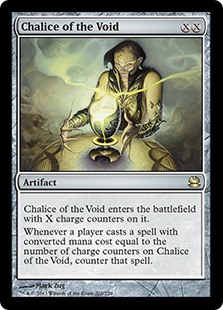
- CFB Eldrazi—Well, we knew that the Eldrazi would see play in some form, but this is a pretty big surprise. Team Channel Fireball, composed of some of the best players in the game, brought an essentially mono-colorless Eldrazi deck featuring [mtg_card]Chalice of the Void[/mtg_card]; as Saffron points out, Chalice helps shore up any weaknesses the deck may have had against aggressive strategies like Burn, since it can pre-emptively shut off spells of a particular mana cost. By exiling [mtg_card]Simian Spirit Guide[/mtg_card] for a free red mana, players can drop a Chalice on turn one, shutting off all one-mana spells from their opponent’s deck—which is exactly what happened here in this round 5 feature match between Shuhei Nakamura and Makihito Mihara. The deck doesn’t go as big as Eldrazi strategies we’ve previously seen, instead sticking to midrange threats like [mtg_card]Thought-Knot Seer[/mtg_card] and [mtg_card]Reality Smasher[/mtg_card]. Of course, since it’s an Eldrazi deck, it can cast these on turn two or turn three anyway.

- Blue-Red “Booster Draft” Eldrazi—Current tournament leader Jiachen Tao brought a very different kind of Eldrazi deck, one which goes wide instead of trying to lock opponents out with [mtg_card]Chalice of the Void[/mtg_card]. Tao’s deck abuses the mana-saving clause on [mtg_card]Eye of Ugin[/mtg_card], which reduces the cost of colorless Eldrazi spells you play by 2. That’s each Eldrazi spell—so if you play multiple Eldrazi in a single turn Eye can represent four, six, or even eight mana from a single land. Tao’s deck aims to do just that, with as many as twenty three-mana Eldrazi, each of which he can play by tapping a single [mtg_card]Steam Vents[/mtg_card] or [mtg_card]Cavern of Souls[/mtg_card]. [mtg_card]Vile Aggregate[/mtg_card] looks like a key player here, backed up by Scion generators like [mtg_card]Eldrazi Skyspawner[/mtg_card] and (I can’t believe I’m typing this) [mtg_card]Drowner of Hope[/mtg_card]. [mtg_card]Ruination Guide[/mtg_card] pumps the team to give the swarm plan some extra punch.
- Death’s Shadow—Would you like to have a 6/6 or 7/7 creature for one mana? Black, ever the color to ask just how hard you wanna ball, has you covered with [mtg_card]Death’s Shadow[/mtg_card]—subtract your life total from lucky number 13, and that’s how big the Shadow is. The deck sets up its namesake card by taking as much damage as possible off its lands and spells—1 life to fetch, 2 to put [mtg_card]Blood Crypt[/mtg_card] into play untapped, 2 to cycle [mtg_card]Street Wraith[/mtg_card], 2 to cast [mtg_card]Gitaxian Probe[/mtg_card] or [mtg_card]Mutagenic Growth[/mtg_card] for free. But luck is definitely required, as dealing yourself tons of damage is risky in a field with fast decks like Burn and Affinity. To help, [mtg_card]Temur Battle Rage[/mtg_card] can end the game in one quick burst, before death itself comes calling.
- Blue Moon—This blue-red control deck is currently 5-0 in the hands of frontrunner Jason Chung. Playing control is difficult in Modern, where decks can attack from so many angles; it’s almost impossible to always have exactly the right answer at the right time. The Blue Moon deck tries to co-opt its opponents’ plans with [mtg_card]Blood Moon[/mtg_card], which makes most Modern manabases into mono-[mtg_card]Mountain[/mtg_card]s. You don’t have to worry about countering or killing everything if your opponent no longer has the right mana to cast spells! [mtg_card]Snapcaster Mage[/mtg_card] works overtime here, flashing back card-selection spells like [mtg_card]Serum Visions[/mtg_card], tempo spells like [mtg_card]Remand[/mtg_card], and burn spells like [mtg_card]Lightning Bolt[/mtg_card], depending on whether the deck needs to dig, defend, or defeat.
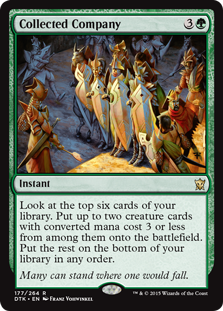
- Abzan Company—I left this archetype off the list last night, but since it’s being played by current 7-1 player Bartlomiej Lewandowski, you may be seeing it again on camera. Modern [mtg_card]Collected Company[/mtg_card] decks (Abzan is the most popular, though there are others) generally try to assemble infinite combo composed of several creatures: a sacrifice outlet (usually [mtg_card]Viscera Seer[/mtg_card]), a creature with persist that has a useful enters-the-battlefield ability ([mtg_card]Kitchen Finks[/mtg_card] or [mtg_card]Murderous Redcap[/mtg_card]), and a card that negates the -1/-1 counters persist places on creatures (either [mtg_card]Melira, Sylvok Outcast[/mtg_card], or [mtg_card]Anafenza, Kin-Tree Spirit[/mtg_card]). Put those three categories together, and you gain infinite life or deal infinite damage as your persist creature jumps in and out of the graveyard. Company helps dig for creatures at instant speed, which helps the combo be more consistent; [mtg_card]Chord of Calling[/mtg_card] can tutor for a specific piece in a pinch. The deck has a pretty robust backup plan of killing with resilient creatures, and Company helps here, too, providing two good bodies for one card.
And the rest of the metagame primer continues below:
- Affinity—Rise of the machines! Affinity plays loads of cheap artifact creatures; most cost zero or one mana, like [mtg_card]Ornithopter[/mtg_card] and [mtg_card]Vault Skirge[/mtg_card], so the deck can dump its entire starting hand as early as turn 2. Cards like [mtg_card]Signal Pest[/mtg_card] help these weaker creatures chip in for early damage. The deck kills with artifact-counting cards like [mtg_card]Cranial Plating[/mtg_card], which can easily give a creature +7/+0 or more.
- Burn—One of the most straightforward decks in Modern, Burn uses the best direct-damage spells ever printed and points them straight at the opponent’s head. [mtg_card]Lightning Bolt[/mtg_card], [mtg_card]Lava Spike[/mtg_card], [mtg_card]Boros Charm[/mtg_card]—anything that melts a face or two. Burn decks typically run a few creatures like [mtg_card]Goblin Guide[/mtg_card] or [mtg_card]Eidolon of the Great Revel[/mtg_card] to add early damage or lock the opponent out of spells.
- Tron—”Urzatron” decks are built around assembling the trifecta of [mtg_card]Urza’s Tower[/mtg_card], [mtg_card]Urza’s Mine[/mtg_card], and [mtg_card]Urza’s Power Plant[/mtg_card]. When all three are in play, they tap for seven mana total between the three of them, so Tron can power out overwhelming cards like [mtg_card]Karn Liberated[/mtg_card] and [mtg_card]Ugin, the Spirit Dragon[/mtg_card] well ahead of schedule. New Oath card [mtg_card]Kozilek’s Return[/mtg_card] is expected to give this archetype a boost.
- Infect—We talked about infect a bit last week; remember, creatures with infect give the opponent poison counters, and it only takes ten poison counters to kill your opponent. Infect decks supercharge that clock by playing very efficient pump spells like [mtg_card]Might of Old Krosa[/mtg_card] and [mtg_card]Vines of Vastwood[/mtg_card]. [mtg_card]Noble Hierarch[/mtg_card] and [mtg_card]Pendelhaven[/mtg_card] do yeoman’s work, adding in a (very relevant) poison counter or two each attack. Usually, Infect uses one creature to chip in for a few small attacks, then finishes the game in one huge shot. [mtg_card]Apostle’s Blessing[/mtg_card] provides a little protection for the critical turn.
- Merfolk—Another aggressive deck, Merfolk combines pressure from its namesake tribe with cheap countermagic to hold the opponent off balance. [mtg_card]Aether Vial[/mtg_card] lets the deck put creatures directly into play, so the Merfolk player can use mana from lands to cast [mtg_card]Spell Pierce[/mtg_card] or [mtg_card]Remand[/mtg_card]. It only takes a few turns of stalling; Merfolk runs lots of “lords” like [mtg_card]Lord of Atlantis[/mtg_card] and [mtg_card]Master of the Pearl Trident[/mtg_card], so their creatures tend to grow exponentially, as each lord pumps the others. To top it off, [mtg_card]Spreading Seas[/mtg_card] turns opponents’ lands into Islands—which not only ruins their mana, it makes Merfolk’s creatures pretty much unblockable thanks to islandwalk.
- Eldrazi—A recent innovation, this deck is one of the big wild cards going into the Pro Tour—everyone knows it’s good, but no one knows how good. The deck gets to cheat on mana by using [mtg_card]Eye of Ugin[/mtg_card] and [mtg_card]Eldrazi Temple[/mtg_card], each of which effectively produce two mana to cast colorless Eldrazi spells. They didn’t amount to much when the only colorless Eldrazi cost seven mana or more, but Battle for Zendikar block gave them a lot more to do, thanks to devoid and Kozilek’s colorless creatures. Two Eldrazi Temples cast [mtg_card]Thought-Knot Seer[/mtg_card] on turn two, for example, and the deck can follow up with [mtg_card]Oblivion Sower[/mtg_card] or [mtg_card]Blight Herder[/mtg_card] on turn three. Some versions try to explode with [mtg_card]Eldrazi Mimic[/mtg_card]s, others work their way all the way to [mtg_card]Ulamog, the Ceaseless Hunger[/mtg_card].
- Scapeshift—It’s all about that ‘scape, ’bout that ‘scape, that ‘sca-ape. The basic plan for this deck is to get seven lands in play, then resolve the deck’s eponymous spell, [mtg_card]Scapeshift[/mtg_card], which allows its caster to search out a bunch of lands and put them into play. The pilot finds six Mountains and [mtg_card]Valakut, the Molten Pinnacle[/mtg_card]; since Valakut sees six Mountains enter the battlefield with it, it will trigger six times, flinging 18 damage at the opponent—almost always enough to kill. Since Scapeshift spends its early turns finding mana, it can play disruptive elements like counterspells as well, and it often plays out a bit like a control deck with a combo finish.
- Grishoalbrand—This deck employs a “reanimator” strategy—dumping a powerful creature into the graveyard, then cheating it straight back into play. Ideally, that powerful creature is [mtg_card]Griselbrand[/mtg_card], whose crazily powerful ability can draw fourteen cards right away. Ideally, one of those cards will be [mtg_card]Nourishing Shoal[/mtg_card], which can be cast for free (if you exile a card from your hand—I wonder where you’d get extras?) and which will gain a pile of life. Griselbrand trades that life for more cards, and before you know it, you have most of your deck in your hand. The deck can usually win with a [mtg_card]Worldspine Wurm[/mtg_card] or a [mtg_card]Borborygmos Enraged[/mtg_card] at that point.
- Living End—Let’s say you don’t want to reanimate just one creature, though—you want to reanimate all of them. Living End has your back, provided you can cast it. Normally you’d have to suspend it and wait three turns, but this deck cuts corners by using spells with cascade, like [mtg_card]Violent Outburst[/mtg_card]. Cascade lets you flip cards off the top of your deck until you find something with lower converted mana cost. Living End’s converted mana cost is 0, and it’s actually the only spell you can cascade into in the whole deck, so every cascade spell will find it. Since your curve starts on turn three, you spend your early turns cycling away big creatures like [mtg_card]Monstrous Carabid[/mtg_card], so you have plenty of stuff to bring back. Oh, and [mtg_card]Living End[/mtg_card] makes your opponent sacrifice every creature he or she has in play. So there’s that, too.
- Bogles—Remember when you first started playing Magic, and all you wanted to do was load up a creature with sweet enchantments? It’s like that, except that it uses hexproof creatures (like the deck’s namesake, [mtg_card]Slippery Bogle[/mtg_card]) to make it harder for opponents to stop the plan. There are lots of great enchantments in Modern—[mtg_card]Rancor[/mtg_card], [mtg_card]Daybreak Coronet[/mtg_card]—so these creatures get real scary, real fast, and totem armor cards like [mtg_card]Hyena Umbra[/mtg_card] make them extra-hard to kill.
- Ad Nauseam—This quirky combo deck uses Ad Nauseam to draw every card in its library. Normally, you’d lose enough life to Ad Nauseam that you’d have to stop, or you’d die. But this deck sets up its namesake card draw spell with cards like Angel’s Grace and Phyrexian Unlife, which allow it’s controller’s life total to temporarily go below 0. Once you’re past that pesky restriction, cards are completely free, so you pick up your entire deck, cast [mtg_card]Lightning Storm[/mtg_card] off three [mtg_card]Simian Spirit Guide[/mtg_card]s, and discard all your lands to kill your opponent. TL;DR: Draw your whole deck and win.
- Zoo—Zoo decks are aggressive decks that mash together inexpensive, efficient creatures—low mana costs, high power. They tend to be animals, as a fun coincidence: [mtg_card]Wild Nacatl[/mtg_card], [mtg_card]Flinthoof Boar[/mtg_card], sometimes [mtg_card]Kird Ape[/mtg_card] or [mtg_card]Loxodon Smiter[/mtg_card]. Usually a few burn spells like [mtg_card]Lightning Bolt[/mtg_card] give the deck a little reach, and removal spells like [mtg_card]Path to Exile[/mtg_card] help keep blockers out of the way.
 Jund—To put it simply, this black-red-green deck just plays the best cards. Jund is all about grinding the opponent down bit by bit; each card is meant to generate card advantage ([mtg_card]Dark Confidant[/mtg_card], [mtg_card]Liliana of the Veil[/mtg_card], [mtg_card]Kolaghan’s Command[/mtg_card]), or answer opposing cards one-for-one as efficiently as possible ([mtg_card]Inquisition of Kozilek[/mtg_card], [mtg_card]Lightning Bolt[/mtg_card], [mtg_card]Terminate[/mtg_card]). Eventually, they die.
Jund—To put it simply, this black-red-green deck just plays the best cards. Jund is all about grinding the opponent down bit by bit; each card is meant to generate card advantage ([mtg_card]Dark Confidant[/mtg_card], [mtg_card]Liliana of the Veil[/mtg_card], [mtg_card]Kolaghan’s Command[/mtg_card]), or answer opposing cards one-for-one as efficiently as possible ([mtg_card]Inquisition of Kozilek[/mtg_card], [mtg_card]Lightning Bolt[/mtg_card], [mtg_card]Terminate[/mtg_card]). Eventually, they die.
- Abzan—See Jund, but with white instead of red. [mtg_card]Lingering Souls[/mtg_card] and [mtg_card]Path to Exile[/mtg_card] usually make an appearance, and sometimes standard mainstay [mtg_card]Siege Rhino[/mtg_card] joins the fun.
- Death and Taxes—This (usually) mono-White deck tries to make the death happen through the taxes. It takes effects like [mtg_card]Thalia, Guardian of Thraben[/mtg_card], which force opponents to pay a little more for spells, and adds a mana denial element: the [mtg_card]Leonin Arbiter[/mtg_card] plus [mtg_card]Ghost Quarter[/mtg_card] combo, which destroys opponents’ lands, then denies them the ability to search out replacements. While the opponent is unable to cast spells, efficient white creatures like the creepy [mtg_card]Flickerwisp[/mtg_card] kill them.
- Lantern Control—This prison-style deck plays cheap spells so it can empty its hand quickly, at which point [mtg_card]Ensnaring Bridge[/mtg_card] keeps opposing creatures from attacking. With [mtg_card]Thoughtseize[/mtg_card] and [mtg_card]Inquisition of Kozilek[/mtg_card], it can strip threats and answers from the opponent’s hand. Once the opponent is locked out of combat and has no tools to fight back, it uses [mtg_card]Lantern of Insight[/mtg_card] to keep an “eye” on the opponent’s upcoming draws and [mtg_card]Ghoulcaller’s Bell[/mtg_card] or [mtg_card]Codex Shredder[/mtg_card] to make sure those draws are never anything useful.
- Grixis Control—Last but certainly not least, Grixis Control is an amalgam of powerful effects in blue, black, and red. It’s a bit like Jund, in that it plays excellent cards, but here the strategy is to recur powerful countermagic and removal spells with [mtg_card]Snapcaster Mage[/mtg_card] and [mtg_card]Jace, Vryn’s Prodigy[/mtg_card]. Since it looks to cast spells from the graveyard, Grixis tends to fill it up with cards like [mtg_card]Thought Scour[/mtg_card]. Its cantrips ([mtg_card]Gitaxian Probe[/mtg_card] and [mtg_card]Serum Visions[/mtg_card]) help it draw to its best cards and likewise add to the graveyard count. Finally, the deck can close quickly with a powerful delve creature like Tasigur, the Golden Fang, turning all those spent cards into virtual mana.
Phew! Like I said, that’s only a few of the most popular decks. If you’d like to read more, there are lots of resources. I recommend (roughly in order of accessibility) Reid Duke’s intro, LSV’s short guide to the format, or Craig Wescoe’s rundown of twenty-five popular Modern decks (split into five major categories). If you just want decklists, I’ll once again point you to the Modern metagame page on MTGGoldfish.com, which is a stellar resource..
Second Drafts of Oath Limited
The Pro Tour’s not just Modern, though; each day kicks off with a booster draft showcasing the most recent format. In this case, it’s Oath-Oath-BFZ. Two weeks in, powerful strategies are starting to emerge, and the early winners look like blue-red and red-white.
Red-White, as I mentioned in my limited set review two weeks ago, is an ally-centric deck. It’s not hard to draft a deck where almost every creature triggers the rally abilities you draft from the Battle for Zendikar pack. The common creatures’ rally triggers are a bit more tame, but the uncommons can be game-breaking, especially [mtg_card]Resolute Blademaster[/mtg_card]—while it’s not likely your pod will open one, if you’re the red-white drafter, you should get it. On top of this, the red and white common creatures from Oath are good at attacking—[mtg_card]Zada’s Commando[/mtg_card] and [mtg_card]Kor Scythemaster[/mtg_card] have first strike, and Kor Sky Climber can gain flying. It’s not hard to get in for eight to twelve points, then finish the game out with a powerful Ally synergy.
Red-Blue gets to showcase surge, which has impressed me so far. Even if you have to wait until turn four or five to power out your [mtg_card]Jwar Isle Avenger[/mtg_card] or [mtg_card]Boulder Salvo[/mtg_card], you are doing so in the context of a turn when you cast two spells, which means the board state can shift dramatically in your favor. Check out Fabrizio Anteri’s GP Mexico City-winning deck to see how out of control this can get. The deck can go long with Valakut Invoker, as well, as seen in Adam Jansen’s championship game from GP Vancouver.
In general, the conventional wisdom seems to be holding true—basics like efficient creatures and a good mana curve can carry you far in this format. Given that, one can understand why color combinations whose cards naturally pull in the same direction, as red-white and blue-red do, are attractive archetypes to draft. Rather than, say, a “rally deck,” your deck operates on the synergy of “my creatures are tough to block.” Smaller, less explicit synergies can go a long way here.
More broadly, Green is better, as its creatures are more reasonably sized and don’t always require heavy synergies to be effective. The board can get cluttered, as ground attackers can have difficulty crashing through x/4 blockers. I haven’t drafted a colorless-matters deck yet, but it seems like prioritizing colorless sources, especially on creatures, is a big component of making that deck successful. Cards like [mtg_card]Havoc Sower[/mtg_card] and [mtg_card]Essence Depleter[/mtg_card] are very powerful—provided you can activate them several times per turn.
If you’d like a little more reading, check out Neal Oliver’s article series on the color pairs in Oath draft, read this article by Melissa de Tora about what the pros are thinking heading into the Pro Tour, and be sure to tune in for the Pro Tour drafts on Friday and Saturday morning! They’re always fun to watch.

